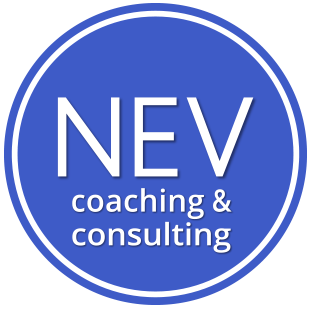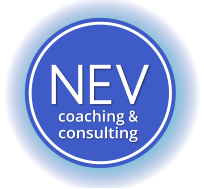 The Simple Formula to Excellent Communication. In my work over the last years, one observation that has continued to impact me is how many difficulties – both personal and professional – stem from either poor communication or a lack thereof.
The Simple Formula to Excellent Communication. In my work over the last years, one observation that has continued to impact me is how many difficulties – both personal and professional – stem from either poor communication or a lack thereof.
We so often seem to struggle with situations, issues and emotions that, more than anything, require a good quality conversation to be resolved, or at least meaningfully improved.
Here I would like to propose a simple but incredibly effective guide on how to design such a conversation towards conveying almost any information or resolving a given concern.
Whether you need to speak to your boss, employees, clients or loved ones.
Or wish to present a good argument for a pitch or negotiation.
A well-structured communication will often be a good place to start for creating positive progress and results in the future.
Here’s how…
1. What do you want to accomplish with Excellent Communication?
We often try to start any communication with what we want to say, but this is in fact the third step.
A better place to begin is by what you want to accomplish with the communication.
2. What do you want your audience to understand, feel and do as a result?
If you can outline these objectives first, it will serve as your guide as to how to design the rest of the communication for maximum effectiveness. Here you will find some more guidelines that can help you with this.
Generally, in excellent communication, we look for the audience to do the following:
- Properly receive the communication – if they don’t hear it, receive it (in whatever format), the rest of the interaction is meaningless.
- Acknowledge the communication – once they have successfully received it, we need the audience to register that (they may receive an email but ignore it, for example).
- Understand the communication as intended – this means that they have correctly understood the message.
- Act on it accordingly – any productive communication with a purpose will require the receiver to do something as a result. That can mean simple comprehension for future action or immediate response.
3. For Excellent Communication you need to know: what does your audience want?
We often become so consumed by our own perspective and what we want to say that we can overlook the perspective and context of those we are speaking to.
Why is this important?
The more you can understand, acknowledge and speak to the perspective of the other, the better your chances of creating successful excellent communication by building a common platform of trust and understanding.
The idea is to establish a space where both parties feel heard, respected and understood. Which optimizes the desire for both arrive to a mutually beneficial end.
Reflect on (even write out) the following:
- What is your audience’s perspective on the topic and key opinions?
- What might be their concerns?
- And what may be their own expectations and desires for how it should play out?
- When is the optimal moment to communicate with them?
- What is the optimal format to deliver the communication?
4. So, what do you want to say?
Now that you have considered both what you want to accomplish with the communication, as well as the perspective and context of your audience, what do you need to say to cater to both?
General best practices for designing effective messages are:
- Clearly stated and direct (without being aggressive).
- Effectively summarize key points.
- Use statements that demonstrate your knowledge of their perspective.
- Address their concerns directly (instead of assuming or avoiding them).
5. How do you want them to feel?
Part of excellent communication is not just WHAT you say, but HOW you say it, which is to say the delivery.
And oftentimes, success lies in the latter.
Because the same message delivered aggressively or carelessly might be rejected but with effective emotional intelligence and finesse, will pass with flying colors.
This includes non-verbal communication and style of speaking such as:
- Using collaborative, generous language (“we” instead of “I” vs. “you”).
- Aligning your body language with theirs and remaining “open”.
- Holding gentle eye contact and attention to your audience.
- Matching your style of speaking (or other non-verbals) to theirs.
- Summarizing and “reframing” what they say back to them to show you truly understand their point of view.
6. The importance of silence, questions, active listening and next steps for Excellent Communication
These last four elements are where the true magic happens in excellent communication, of any type. Each one of these could be a post by itself, but here we will review the basics.
-
Questions
- In most cases, your audience will want to express their own thoughts and feelings.
- Prepare thoughtful questions to encourage them to do so.
- These should include the information you need from them in order to achieve your objectives.
- As well as information you think they will want to be asked so that they feel truly implicated and considered in the communication.
-
Active listening
- When your audience speaks, listen for real.
- This means on three levels:
- (1) hearing what they say.
- (2) hearing the deeper meaning behind what they are saying and not saying.
- (3) listening with your heart for the emotions they are transmitting.
- This is an art, and truly listening to someone is one of the greatest gifts we can give to them.
-
Silence
- Sometimes we are so excited to speak our part that we don’t leave enough room for space and silence.
- And especially for more careful or thoughtful communicators in your audience, it is necessary to give them some time to reflect before they engage.
- Count to 10 after important questions are presented or you see their desire to speak.
- And be patient. Some of the best information comes slowly.
-
Next steps
- If your objective is to have your communication incite action, clearly state the next steps you wish to take place.
- If these need to include your audience’s opinion and/or participation, ask them directly about their insight on how best to move forward.
- Then mutually agree to how and when this will be accomplished.
- and make sure to follow up accordingly.
Test it out and send us your comments!


